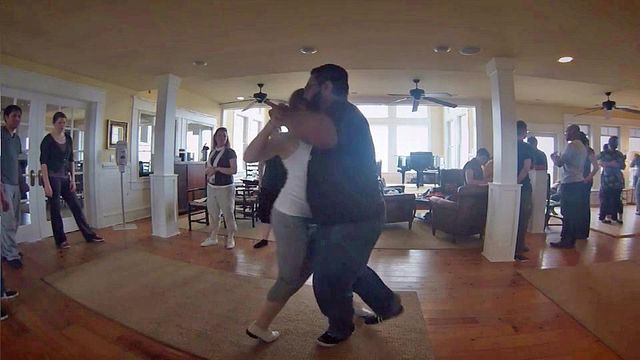In Outer Banks, dance camp reaches a new level
In a luxury retreat along North Carolina's Outer Banks, the Balboa Experiment pushes the idea of a week at dance camp to a whole new level.
Posted — Updated"I've been dancing for over a decade, full time. If you had told me 20 years ago this is what I'd be doing for a living, I'd said no way," said David Rehm, founder of The Balboa Experiment.
Rehm wanted to spread his love of dance and experimentation with others.
"They spend an entire week, in a very immersive environment, where you see the creativity pour out of them," he said. "We don't lose a lot of time to things like traffic and things like all the trappings of the city. Everything revolves around this house when we are here, and yet it's set in this amazing location."
Mike Legenthal, a blues dance instructor from Boston, called the location paradise. "I think David wanted something that didn't have the distractions of a typical dance weekend," she said.
The setting, in the far northeast corner of North Carolina, north of Corolla, plays a part in the focus. "I'm running a dance camp up here in the 4-wheel drive area," Rehm said. There are no roads and no street signs. Participants are shuttled to the house on those four-wheelers, and eat and sleep in shared quarters.
Over the course of five weeks, 150 students or about 30 per week, are accepted from the pool of hundreds of applicants to take time off from their day jobs to follow a passion.
"We are actually teaching the process of how to learn to dance," Legenthal said. "We're taking people and saying, 'Here's an idea. Explore, make stuff up, impress us, challenge us, challenge each other.'"
Dancers come from all over. Alba Mengual, from Spain, said, "This camp is very very different, because the focus is not having an instructor to teach you, but (it) is having you find resources in yourself to keep learning."
"I am here to dance a whole lot, explore concepts, push boundaries, see what happens," said Tess Myers. "Dancing to me is kind of one of the purest expressions of joy."
Participants apply up to a year in advance – most submit a video of their dancing – and spend about $1,000 for the instruction, food and lodging.
"They want to get better at what they do, which means they study great dancers," Rehm said. "But ultimately they don't want to be a copy of one of those dancers. They want to become their own dancer."
What is Balboa?
Balboa today is commonly used both as a term to describe a fusion of dances that originated in Southern California during the 1920s and 1930s, and also to refer to a specific dance from that era that was the original Balboa (sometimes also referred to as Pure-Bal). The original Balboa dance is a form of swing dance that started as early as 1915 and gained in popularity in the 1930s and 1940s. It is danced primarily in close embrace, with the dancers having a full body connection.
The art of Balboa is in the subtle communication between the lead dancer and the one following, including weight shifts, which most viewers cannot see. As a result, Balboa is considered more of a "dancer's dance" than a "spectator's dance." Its exact origins are obscure, especially as most of the original Balboa dancers have since died.
Balboa is danced to a wide variety of tempos. Because the basic step takes up such a small space, Balboa can be danced to fast music (over 300 beats per minute). Balboa is also danced to slow music (under 100 beats per minute), which allows more time for intricate footwork and variations.
• Credits
Copyright 2024 by Capitol Broadcasting Company. All rights reserved. This material may not be published, broadcast, rewritten or redistributed.





